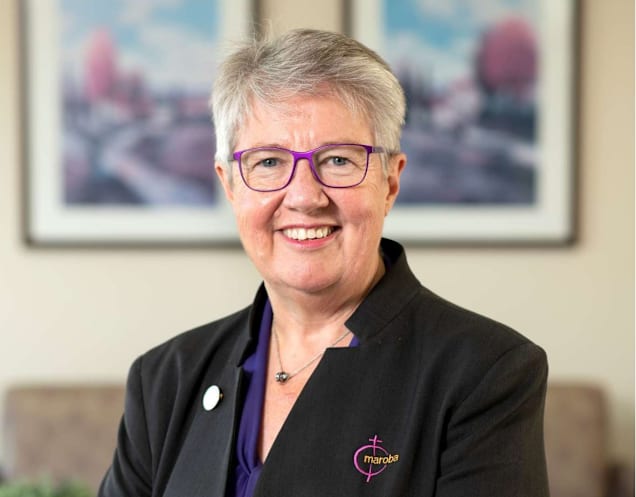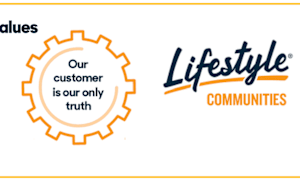A statement that highlights how broken the funding model for aged care in Australia truly is.
A Registered Nurse of 45 years, Viv moved from being the small Not For Profit’s Executive Director of Nursing to CEO in 2000.
She now oversees 150 residents across two aged care homes, plus a retirement village and a range of community and wellness programs that Maroba offers to people living at home across Newcastle and the Hunter region all located on their Waratah campus.
She has also been one of the sector’s most outspoken critics of the Prime Minister Scott Morrison’s comments that aged care homes should re-open their doors to visitors during the pandemic that resulted in the development of the Industry Code or Visiting Residential Aged Care Homes during COVID-19.
As we reported here, the PM had personally taken a complaint from a family member of one of Maroba’s residents to the Aged Care Quality and Safety Commission (ACQSC).
So, how is Maroba weathering the financial cost of the pandemic – and handling visits from families now?
In the red – but doing everything right
Viv says the funding model for aged care is broken, citing the fact that Maroba accessed the Federal Government’s free business advisory services run by PwC.
“They told us we really can’t advise you anything,” she laughed. “Your organisation is very mature and doing everything right, which was reassuring.”
However, Maroba was one of the 50% of operators in the red before the pandemic – and the outbreak has not improved this situation.
Maroba had set up an isolation wing in the event of an outbreak, which dropped its occupancy from 96-98% to 92-93% – a fall which will result in a $1.2 million loss in income over six to 12 months.
Investment income wiped out in two months
While they are now building their occupancy again and completed a new six-month budget, the two months of lockdown measures also saw a $600,000 to $700,000 loss on their investment income.
Viv calls it the “perfect storm”: the baseline of poor funding, combined with the challenge of trying to change service models, embed the new standards, the costs hit on the bottom line from the pandemic, the overall global financial situation, the extra costs for staff and “astronomical” prices increases for PPE.
They also had to drop their community services during the pandemic, which further challenged their income.
Families and Government expect a ‘hospital on a cruise ship’
Viv says the costs of meeting the more complex needs of today’s aged care resident – along with the increasing costs of compliance – requires a hospital model of funding.
“The care is very complex yet the expectation seems to be that you should be running a hospital on a cruise ship. Trying to do that on $240 a day doesn’t go very far,” she said.
“If we want to get services up to a standard where we as citizens of this nation want to live in aged care... the community need to say to the Government, we need to put more money into aged care … or the Government needs to come clean to the community and say you need to pay the difference yourself.”
The CEO points out that wages have increased 38% in the past decade while the subsidy had only gone up 18%.
“You don’t have to be Einstein to know that that doesn’t add up. The funding model is flawed and the funding versus expectation gap is widening by the day.”
Aged care living under “police state”
Viv acknowledges that the answer is not simply ‘more money’ – but also the need for the relationship between providers and the Government to be renegotiated.
“We are seeing in the Royal Commission that care is compromised,” she said.
“In terms of the abuse of residents, it is never acceptable in any setting yet no amount of money will fix that, if the wrong people are employed or the culture is toxic.”
“But talking about the systemic problems and trying to meet new bars of expectation and compliance in an environment which is more like a police state, where there is no collaboration any more between providers, the legislator and the Quality and Safety Commission. I think we have to say if we are in human services, a big stick and policing will not bring about the aged care services that we truly desire.”
“We need to start acknowledging there is humanity in the mix,” she added.
Aged care leaders too afraid of regulator
Viv says at the heart of this problem is that aged care leaders are too afraid to challenge the system because they fear being pursued by the regulators.
“Now is that the system we want in this country?” she asked.
“If we have a baseline of service to people that is based on fear, then we have no hope of getting the system right no matter how much compliance is thrown at us.”
“If the Royal Commission adds further to the compliance regime, I may as well get out of the game because my heart will no longer be required.”
Lawyer engaged to deal with family complaints
Viv says Maroba is now offering families the opportunity to see loved ones via appointment using three rooms (complete with Perspex screens) in addition to in-room visits for regular carers and end-of-life and palliative care visits which they were already offering during the restrictive measures.
For family members without a flu vaccination (now mandatory since 24 March 2020 in NSW and 1 May 2020 nationally), window visits are the option.
Not all family members are happy however – the CEO has had to engage a lawyer to write to family members who continue to challenge the legality of the Public Health orders and vaccination requirements.
Risk of transmission still high
Viv points out that all the National Cabinet and State and Territory health advice still points to people aged over 70 being and higher risk and staying home where they can.
“People don’t seem to be able to join the dots on that advice,” she said. “The same should apply people aged over 90, especially living in communal environments.”
“Across the sector, people know the risk remains relatively high despite the low number of cases in community.”
Family members of staff helping with screening requirements
The visits are also proving labour-intensive however, with staff roping in their university-aged children as volunteers to manage temperature checks, screening questions and supervision of visitors as many of their older volunteers are too high-risk to come in.
“Some volunteers are past employees who are now retired so it is working quite well,” she said, “but it’s still putting a lot of pressure on the organisation to keep this up, especially if our volunteers are not able to come in.”
Viv says they are now waiting to see if there are any increases in cases of community transmission following the recent easing of restrictions and demonstrations last weekend.
“Even without these current restrictions, there will be a lot more careful monitoring of people coming into facilities in the future,” she stated.
Residents refusing to see families
Viv supports the Industry Code but says it is challenging balancing the wishes of families and residents. Some residents have refused to accept visits from family members or threatened to stay in their rooms if the home is opened up to wider visits.
Viv also commends her staff for their cooperation and support, but says many are understandably anxious about what is happening in the community.
“It’s been a huge demand on our teams within the same footprint of rostering and that’s really challenging for people over time but they are still wanting to show up and do their best.”
No pandemic leave for staff
Lack of funding means Maroba has been unable to offer staff ‘pandemic leave’ if they needed to self-isolate after showing symptoms so staff have used their sick leave – an issue Viv says will need to be resolved if the pandemic continues and for future pandemics.
“If we have a second wave, the whole sector will be knocking on the PM’s door to have paid leave, as they are amongst the lowest paid in Australia,” she said.
“This is not just a normal cold season or gastro; they have to have two weeks off so it’s quite a different use of people’s sick leave.”
Retention bonus further demand on staff time
Viv is also critical of the news that the Government’s COVID-19 retention bonus will be taxed and providers must apply for a grant to access the scheme.
“It’s just another demand on time,” she said. “I’m happy to have some benefits for staff because they have done so well but staff across the sector are probably thinking ‘I’ll need to have a bureaucratic bun fight with authorities to get it if the experience of JobKeeper and JobSeeker is anything to go by.”










